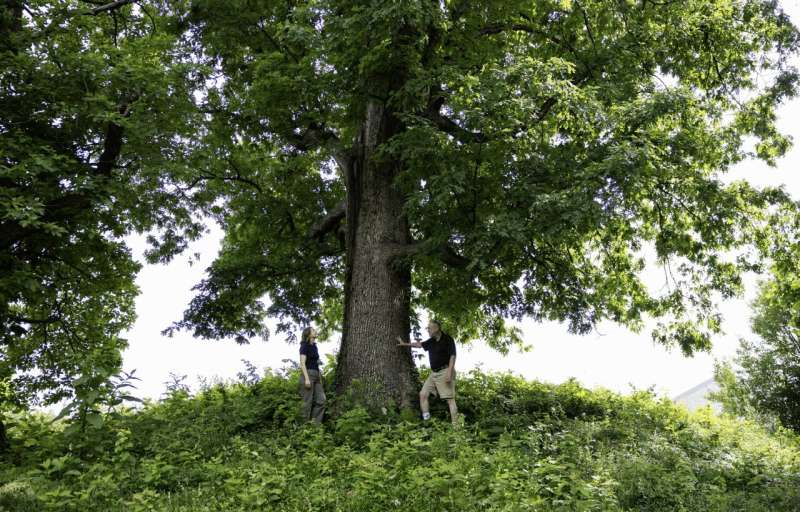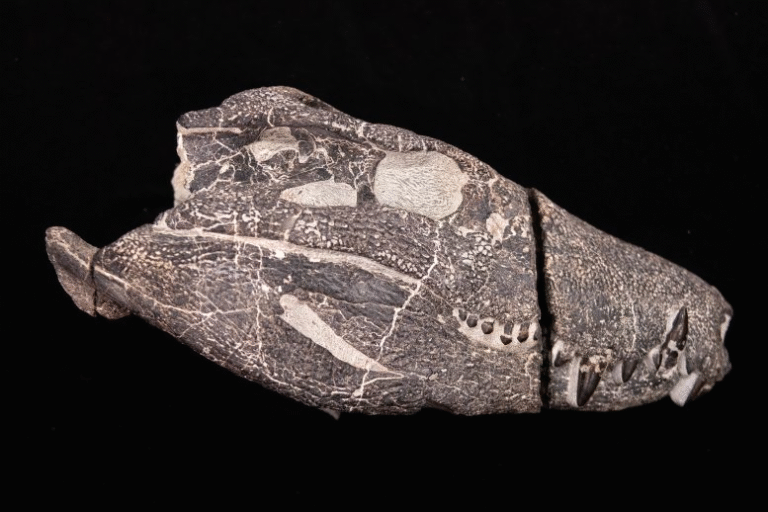White Oak Genome Sequenced: A Breakthrough for Climate Adaptability and Forest Health

For the first time, scientists have successfully decoded the complete genome of the white oak (Quercus alba) — one of North America’s most iconic and ecologically vital trees. This major scientific achievement offers fresh insights into how the species has evolved and how it can be better protected from mounting threats like climate stress, pests, and disease. The new genome sequence is expected to guide conservation, breeding, and reforestation strategies aimed at ensuring that this hardwood giant continues to thrive for generations to come.
Why White Oak Matters
The white oak isn’t just another tree in the forest. It’s a cornerstone species that stretches across much of eastern North America, from the Appalachian foothills to the Midwest plains. Ecologically, it supports a vast network of life — mammals, birds, insects, fungi, and countless microorganisms rely on it for food and shelter. Its acorns feed deer, turkeys, and squirrels, while its broad canopy provides habitat for songbirds and insects.
Economically, white oak wood is one of the most valuable hardwoods in the United States. Its dense grain makes it the wood of choice for whiskey and wine barrels, especially those used by the Jack Daniel’s Distillery in Tennessee and Maker’s Mark in Kentucky. It’s also prized for flooring, furniture, and cabinetry. But beyond its market value, the tree plays a key role in carbon sequestration, biodiversity, and soil health.
Unfortunately, the species is struggling to regenerate naturally. White oak seedlings are often choked out by aggressive vegetation, native and invasive alike. Droughts, pests, and diseases further limit young trees from establishing themselves. As older oaks age out, forests risk losing this keystone species altogether.
The Breakthrough: Decoding the White Oak Genome
Led by Dr. Meg Staton from the University of Tennessee and Dr. Drew Larson from Indiana University, a multi-institutional team has now produced a haplotype-resolved, chromosome-scale genome assembly of the white oak. This means they didn’t just sequence the DNA — they also distinguished between the two sets of chromosomes inherited from each parent, giving scientists a highly detailed view of genetic variation within the species.
This collaborative effort involved the University of Kentucky, the U.S. Forest Service, and several other institutions. The work builds on decades of research under the UT Tree Improvement Program, which began studying white oak genetics in the early 1970s.
The reference tree used for sequencing came from a white oak growing on the Maker’s Mark Distillery property in Loretto, Kentucky — fittingly symbolic, since this species’ wood gives bourbon its signature flavor and amber hue.
The genome sequencing has been published in the journal New Phytologist under the title “A haplotype-resolved reference genome of Quercus alba sheds light on the evolutionary history of oaks.”
What the Genome Reveals
The genome provides a detailed map of chromosomal structure, gene families, and evolutionary history. Among the key findings:
- High Genetic Diversity: White oak maintains an unusually high level of genetic variation, much of which predates its divergence from other oak species. This diversity is one reason oaks can adapt to so many different environments.
- Stable Chromosomal Structure: Despite its diversity, the genome shows strong chromosomal synteny — meaning the basic arrangement of genes along the chromosomes remains remarkably conserved across oak species.
- Structural Variations: The team identified several large chromosomal inversions, such as a 1.1 million base-pair inversion on chromosome 3 and a 1.9 million base-pair inversion on chromosome 9. These subtle rearrangements may affect how certain genes are expressed and how the species adapts over time.
- Defense and Stress Genes: The researchers found extensive variation in R-genes (disease-resistance genes). While their overall number is comparable to other oak species, the copy number within clusters differs — suggesting that white oak populations may have evolved different ways to fight pathogens and pests.
- Phylogenetic Complexity: When comparing gene sequences across oak species, scientists noticed discordant evolutionary signals — a result of extensive hybridization and gene flow between oak species over millions of years. This means that parts of the white oak genome tell slightly different evolutionary stories, complicating traditional “family tree” models of oak evolution.
Why This Discovery Matters
The new genome opens up a world of possibilities for forestry science. With this information, researchers can now pinpoint genetic markers associated with critical traits like drought tolerance, pest resistance, and disease resilience.
In practical terms, that means forest managers and conservationists will be able to breed or select trees that are better equipped to handle the changing climate. For example, future reforestation projects might use white oak seedlings with specific genetic traits that help them survive hotter, drier conditions or resist infestations like oak wilt disease and gypsy moths.
At the Margaret Finley Shackelford Orchard Complex in Grand Junction, Tennessee — a 100-acre facility dedicated to tree improvement — researchers are already conducting precision forestry experiments. Here, they plant pedigreed oak seedlings in competitive forest conditions to identify which genetic combinations perform best. Early results have been promising, especially for white oak, water oak, and cherrybark oak.
These projects are part of a larger push by the University of Tennessee Institute of Agriculture (UTIA) to ensure forest sustainability amid shrinking forested lands and expanding human development. The new genome adds a powerful tool to that effort.
The Bigger Picture: Oaks and Climate Change
Oaks are among the most adaptive and resilient trees on the planet, with some species living for centuries. Yet, even these giants are under increasing stress. Prolonged droughts, warmer winters, and shifting rainfall patterns are altering forest ecosystems faster than many species can adapt.
The ability to understand oak genetics at such a deep level will help scientists predict how different populations might respond to these changes. It can guide assisted migration — where seedlings from more drought-tolerant populations are introduced into areas expected to become warmer or drier. It can also help foresters manage genetic diversity so that no single population becomes too inbred or vulnerable.
Furthermore, white oaks play an outsized role in carbon storage. A mature oak can hold thousands of kilograms of carbon in its wood, helping to offset greenhouse gas emissions. Protecting and regenerating white oaks is, therefore, not just a forestry issue but a climate solution.
A Look at the Future of Tree Genomics
The white oak genome joins a growing list of tree species that have been fully sequenced, including loblolly pine, poplar, and Norway spruce. But trees are notoriously difficult to study at the genomic level. Their genomes are often massive, repetitive, and complex, with high levels of genetic variation. Sequencing a tree genome at the chromosome scale is a major technical feat.
The new genome will serve as a reference for future studies across the oak family (Fagaceae), which includes more than 500 species worldwide. It will also allow researchers to explore how ancient hybridization events have shaped today’s oak forests — and how ongoing gene flow continues to influence local adaptation.
Beyond basic science, the practical benefits could be enormous. With better understanding of genetic traits, foresters could one day grow oaks specifically optimized for certain environments — a key step toward sustainable forestry and ecosystem restoration.
Final Thoughts
The sequencing of the white oak genome is not just a milestone in forest genomics — it’s a hopeful step for the future of North American forests. By unlocking the tree’s genetic blueprint, scientists have created the foundation for healthier, more resilient forests that can withstand the pressures of a changing planet.
As Dr. Meg Staton and her collaborators emphasize, the next phase is clear: use this genomic knowledge to pinpoint which traits truly matter for long-term sustainability. The white oak, long revered in American landscapes and culture, now stands at the frontier of modern science — a living link between heritage, ecology, and innovation.
Research Reference:
A haplotype-resolved reference genome of Quercus alba sheds light on the evolutionary history of oaks – New Phytologist, 2025





